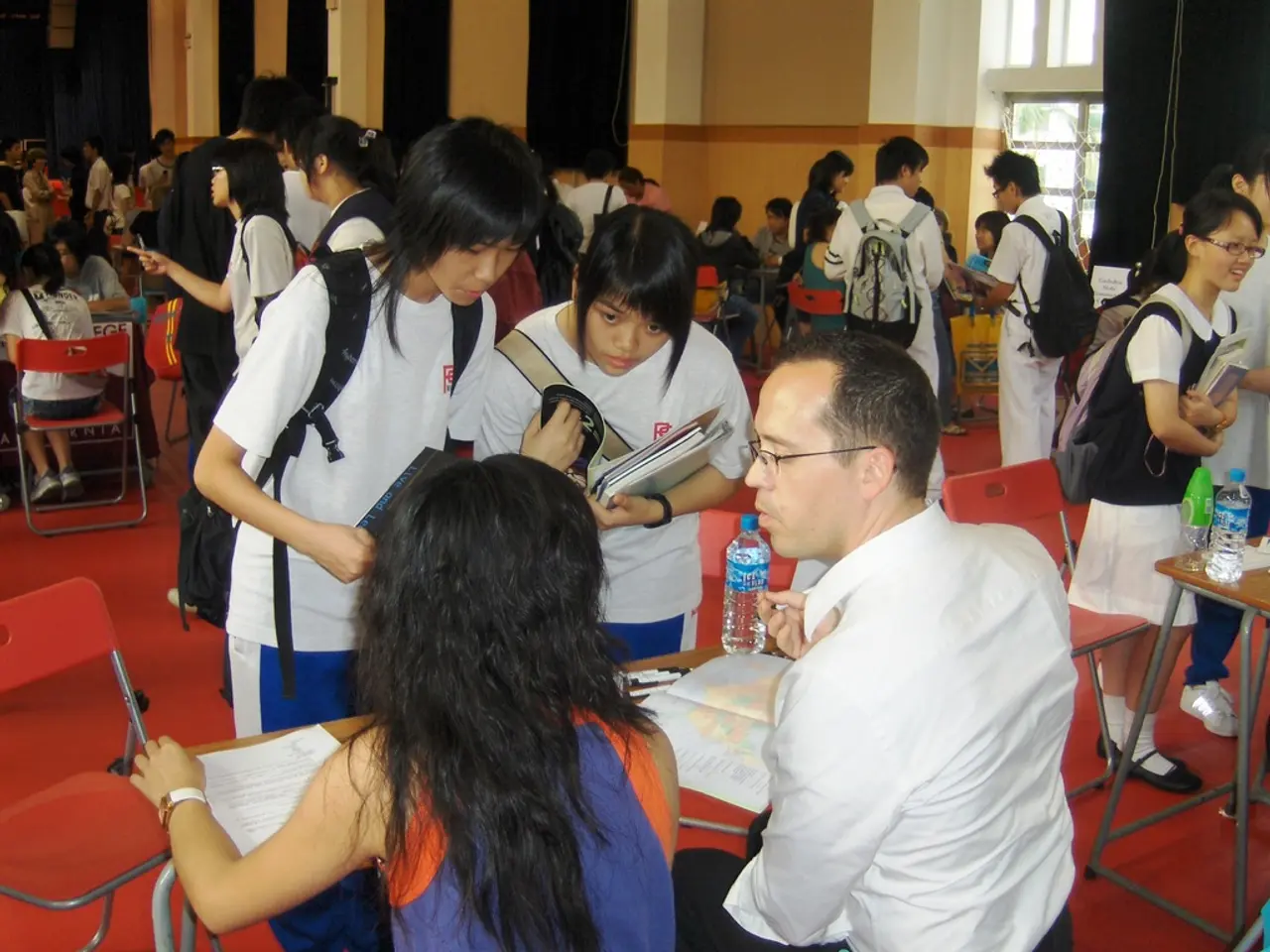Children delve into the world of Constructivism, discovering knowledge through hands-on experience and self-reflection.
Museo dei Bambini, a children's museum in Italy, is a unique educational space that encourages children to learn through active exploration and hands-on activities. This approach, known as constructivist learning, empowers children to build their own knowledge by engaging with the world around them.
Constructivist learning activities, such as digital storytelling projects and collaborative class reflections, are designed to support creativity, sequencing, oral language, and narrative skills. Children are encouraged to plan, narrate, and visualise their stories, fostering a sense of persistence, confidence, and joy in discovery.
Hands-on engineering challenges, like building bridges with popsicle sticks or creating paper circuit art, encourage problem-solving, experimentation, and iterative thinking. These tasks allow children to apply real-world concepts through active exploration, promoting a deeper understanding of various concepts like motion, force, and time.
At Museo dei Bambini, exhibits like Cause & Effect, Chaos Wheel, Kinetic Jams, Wind Tunnel, and Spin to Life, are designed to invite children to form hypotheses, observe outcomes, and revise their thinking. For instance, the Wind Tunnel exhibit offers opportunities for children to test shapes, materials, and weight to understand air pressure, lift, and form.
The Chaos Wheel exhibit teaches children that some systems are sensitive to even tiny changes, while Spin to Life helps them understand systems and feedback loops. Kinetic Jams, on the other hand, emphasises the importance of precision, alignment, and problem-solving in understanding mechanical systems.
Constructivist learning equips children with lifelong tools, such as how to approach a problem, test an idea, revise a plan, and try again. Research indicates that engaging with challenging problems before receiving direct instruction (productive failure) leads to deeper conceptual understanding and enhanced problem-solving skills.
Moreover, constructivist learning environments, which emphasise student-centered, inquiry-based instruction, have been shown to foster critical thinking and metacognitive skills. These environments provide structured freedom, allowing children to explore while also providing support and scaffolding for making sense of discoveries.
Families can support constructivist learning at home by embracing open-ended questions, celebrating mistakes, and providing materials that encourage exploration. By doing so, they can help their children develop stronger problem-solving skills and a deeper understanding of the world around them.
In conclusion, Museo dei Bambini offers a unique and engaging learning environment that aligns with constructivist principles. By encouraging children to actively build knowledge through experience, social interaction, reflection, and purposeful problem-solving, it fosters a love for learning and equips children with essential lifelong skills.
References:
- Constructivist Learning Theory
- Productive Failure: Strategies for Enhancing Understanding through Mistakes
- Constructivism in Early Childhood Education
- Child-Led Learning and Problem Solving
- The 5 E’s Model of Instruction
- Jean Piaget's Constructivist Theory
- Cognitive Science Study on Children's Learning through Exploration
- The Self-Explanation Principle
- Engaging with exhibits like Cause & Effect, Chaos Wheel, Kinetic Jams, Wind Tunnel, and Spin to Life at Museo dei Bambini promotes learning through active exploration, supporting personal growth, problem-solving, and career development.
- Constructivist learning, as practiced at Museo dei Bambini, encourages children to develop self-development and productivity skills by fostering a sense of persistence, confidence, and mindfulness in discovering narrative skills, sequencing, and engineering concepts.
- Constructivist learning methods, as observed in activities such as digital storytelling and hands-on engineering challenges, facilitate goal-setting and skills training, helping children achieve success in their job-search and continued learning throughout their lives.
- The constructivist approach embraced by Museo dei Bambini equips children with critical thinking and metacognitive skills, empowering them to approach problems systematically, revising their thinking when necessary, and applying their learning to real-world situations.
- Families can support constructivist learning methodologies at home by creating an environment that encourages self-explanation, active exploration, and productive failure, thereby fostering a lifelong love for learning, personal growth, and educational success.




